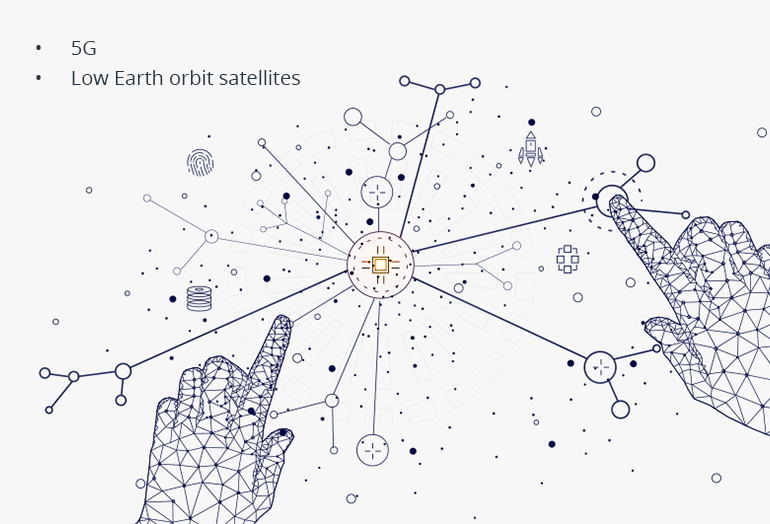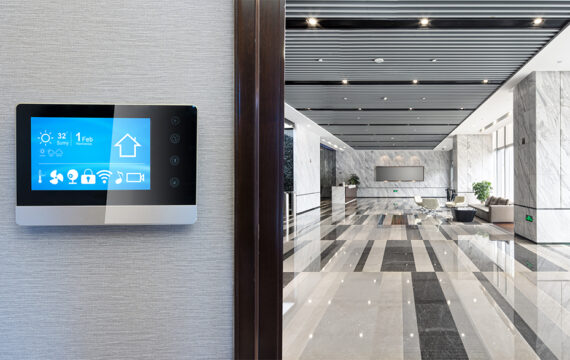The Internet of Things is a vast ecosystem of devices that communicate seamlessly; connectivity is a critical piece of the IoT puzzle. There are more than 30 Internet of Things connectivity technologies on the market today. Taking into account the constant evolution of existing options and the development of new ones, it’s difficult not to get lost among the choices.
So how can you select the best connectivity solution for a particular project? Drawing from our experience, the key criteria you should consider are bandwidth, range, and power consumption. According to McKinsey, the IoT community is trying to create a solution that offers a perfect combination of high bandwidth (for transmitting large amounts of data over huge distances) and low power consumption. But as nobody has yet found the golden egg, there’s still no protocol that can support all use cases. However, some connectivity solutions are more typical than others for particular industries, and we can group connectivity technologies by typical use cases.
Connectivity of today

There are a myriad of connectivity options today; Ethernet as well as various short-range and long-range connectivity technologies are mainstream. All of them are recommended for use in particular industries and shine in different conditions. Here are some thoughts on how and where they can be used.
Ethernet
Ethernet offers a fast, reliable, and secure way to connect things to the internet. It’s commonly used for building automation, smart homes, and industrial use cases. In more general terms, it works best in systems that include many nodes on the same network.
To get the most out of Ethernet, nodes must be located as close to a router as possible. Even if you use Ethernet for short-distance applications to maintain home and building automation, Ethernet cabling may turn out to be too bulky to hide and manage. The wires can present a major challenge. Buildings must be designed for Ethernet in order for it to be a feasible option.
Short-range connectivity technologies
Short-range connectivity technologies provide another way for software developers to connect devices to the internet. The most popular short-range technologies are Wi-Fi, Bluetooth, and mesh technologies used as the consumer Internet of Things.
Wi-Fi is an excellent option for use cases that anticipate high volumes of data. It offers excellent throughput and is perfectly suited for building environments, helping to automate homes and contributing to building energy management. The key reason Wi-Fi is preferred over Bluetooth for these purposes is because it’s 20 to 30 times faster.
Wi-Fi can successfully connect to devices within about 10 meters, and is able to power through obstacles such as walls. The drawback of Wi-Fi, however, is that it uses a lot of power, which may cause issues with IoT applications.
Bluetooth enables continuous streaming of large amounts of data, which is why it’s popular in the consumer electronics segment. As one of the leading mobile connectivity solutions, Bluetooth is designed to fit the requirements of low-powered IoT devices, making it a perfect choice for wearables, fitness trackers, and beacons. Bluetooth works flawlessly in devices that transmit small packets of data in bursts. In addition to low power consumption, one of the main benefits of Bluetooth is its availability in smartphones and other mobile devices.
Mesh technologies (Z-Wave and Zigbee) are often used for smart lighting, security systems, HVAC systems, and remote controls. These connectivity protocols make use of a system of interconnected nodes to haul small data packets across short to medium distances.
Zigbee is used in IoT applications for its security, scalability, flexibility, and low power consumption. Compared to Bluetooth, Zigbee is cheaper to integrate. One disadvantage of Zigbee, however, is that it isn’t compatible with devices like laptops and smartphones.
Devices using the Zigbee protocol need to connect to an internet-connected hub. Low data speeds (250 Kbps maximum) are another issue with this protocol.
Z-Wave is a communication protocol that uses little energy and is used exclusively for home automation. While Z-Wave is six times slower than Zigbee, it uses less energy to cover the same distance.
Long-range connectivity technology
Long-range connectivity technology covers long distances. There are two effective long-range protocols: LoRa and Sigfox.
LoRa is often employed in large IoT projects and IoT development for industrial; it’s used for smart buildings, cities, and smart agriculture. This protocol makes communication over far distances possible, as it can cover at least 500 meters from gateway device to endpoint. The greatest advantage of LoRa is that it uses minimal power while bridging large gaps.
LoRa chipsets serve many IoT networks worldwide. It’s one of the few IoT connectivity options that can solve challenges in energy management, natural resource reduction, pollution control, infrastructure efficiency, disaster prevention, and other spheres.

Sigfox offers a network for connecting low-power IoT devices that send small amounts of data. It’s power-efficient and scalable, allowing millions of battery-operated devices to connect over many square kilometers. Suitable use cases include smart meters, security devices, environmental sensors, and smart street lighting.
Sigfox is effective due to its ultra-narrowband technology that uses a radio transmission method known as binary phase-shift keying (BPSK). Sigfox encodes data in two steps: first, it takes very narrow chunks of the spectrum; second, it changes the phase of the carrier radio wave. The receiver can thus only listen to a tiny slice of the spectrum, which is supposed to mitigate the effect of noise. To manage the network, you only need an inexpensive endpoint radio and a more sophisticated base station that ensures better communication.
Connectivity of tomorrow

When it comes to the connectivity of tomorrow and advanced networking, it’s essential to mention 5G and low-earth orbit satellites, which promise greater bandwidth, lower power consumption, and the ability to transmit greater volumes of data.
5G
5G is an ideal solution for applications that require lots of bandwidth and for weighty machine-type communications. Fifth-generation wireless technology, or 5G, will be able to connect massive numbers of sensors and smart devices within a network. As IoT solutions get more complex and intricate and generate more data, there will be a growing demand for bandwidth — and 5G will be there to face this challenge. 5G is expected to unify smart machines in an environment where seamless flows of information between devices are possible across longer distances and within shorter amounts of time. 5G reduces power requirements to extend battery life.
Low-earth orbit satellites
Compared to large geostationary satellites, clustered low-earth orbit satellites are a better alternative to connect remote areas to the outside world. Though they’ll still serve a purpose, geostationary satellites are less reliable, less responsive, and more expensive. Companies like SpaceX, OneWeb, and others are rising to the challenge to develop small, low-earth orbit satellites that can function anywhere and be stationed in clusters. According to Deloitte Insights, in addition to providing internet access to rural and isolated communities, low-orbit satellites could also become essential networking infrastructure tools for industries such as energy, mining, transportation, and even finance that operate in remote areas.
Conclusion
While the connectivity options of today can’t quite keep up with industry trends, that opens room for improvement for the connectivity of tomorrow. As companies design their IoT strategies, they must be open to change in order to meet new connectivity standards and customer preferences. They should also be prepared to investigate new business models, since advances in IoT connectivity may open some surprising opportunities.




